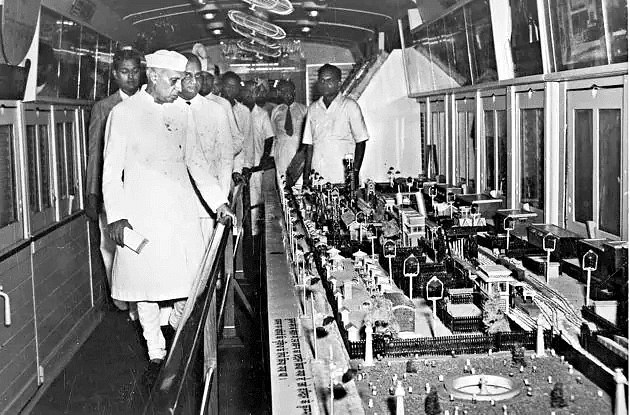Politics of Planned Development Class 12 Political Science
| Table of contents |

|
| What do we understand by Political Contestation? |

|
| Ideas of Development |

|
| Planning |

|
| Early Initiatives |

|
| The First Five Year Plan |

|
| Rapid Industrialisation |

|
As the world’s need for steel increases, Orissa is becoming an important place for investment because it has a lot of unused iron ore. To meet this demand, the state government has signed agreements with both international and Indian steel companies. It hopes these deals will bring in money and generate employment. The iron ore is mostly found in poor parts of the state where many tribal people live. These communities are worried that building industries might force them to leave their homes and take away their way of life. Environmentalists are also concerned that mining and factories might damage nature. The central government feels that stopping industrial growth could send the wrong message and scare off future investors.
What do we understand by Political Contestation?
Expertise vs. Public Decision-Making
- Experts cannot always give clear answers on issues like how to be fair to different groups of people or how to balance the needs of today with the needs of the future.
- In a democracy, big decisions should be made or agreed upon by the people.
- Experts like scientists and economists can give useful advice, but the final decision should be made by elected leaders who understand what people want.
Post-Independence Decisions in India
- After gaining independence, India faced several critical decisions that were interconnected and based on a shared vision of economic development.
- There was a common agreement that India's development should focus on economic growth as well as social and economic justice.
- It was also agreed that the government should play a significant role in this process, rather than leaving it solely to businesses, industrialists, and farmers.
Debates and Political Choices
There were many debates about how the government should help achieve growth with justice. People asked:
Should there be one central body to plan for the whole country?
Should the government run important industries and businesses?
How should the government balance fairness with the need to grow the economy?
Politics and Public Role
- These decisions affected politics and needed public support and discussions among political parties.
- That’s why the story of India’s development is also seen as part of its political history.

Overview of Political Contestation:
- In a democracy or in a democratic country the final decision must be a political decision, taken by people’s representatives who are in touch with the feelings of the people.
- After independence, everyone agreed that the development of India will take place by economic growth along with social and economic justice.
- There was disagreement on the kind of role that the government must play in ensuring economic growth with justice.
Ideas of Development
- Development is a contested concept with different meanings for various groups.
- An industrialist, an urban consumer, and an Adivasi in Orissa would have different views on what development means.
- The debate around development was prominent in the years following India's Independence.
- The 'West' was often seen as the standard for measuring progress.
- Development was equated with becoming more 'modern'.
- Being modern meant emulating industrialized Western countries.
- This process involved the breakdown of traditional social structures.
- The rise of capitalism and liberalism was part of this transformation.
- Modernization was linked to growth, material progress, and scientific rationality.
- This framework allowed for the classification of countries as developed, developing, or underdeveloped.
- At Independence, India faced two models of development: the liberal-capitalist model of Europe and the US, and the socialist model of the USSR.
- Many Indian leaders were influenced by the Soviet model, including those in the Communist Party and the Socialist Party.
- Even Jawaharlal Nehru in the Congress was influenced by this model.
- There was limited support for American-style capitalism.
- This preference reflected a consensus from the national movement.
- India's economic concerns were seen as differing from the colonial government's commercial focus.
- The post-Independence government prioritized poverty alleviation and social and economic redistribution.
- Debates on priorities emerged within this framework.
- Some favored industrialization, while others emphasized agricultural development and rural poverty alleviation.
What is Left and what is Right?
- Left in politics supports government control of the economy and reducing inequality.
- Right supports free markets and less government interference.
- In the 1960s, Left parties like CPI wanted more state role in economy, while Right parties like Swatantra Party supported private business.
Congress leaned slightly towards the Left with its focus on planning and public sector.
Planning
Despite differences, there was agreement that development required government planning, not just private efforts. In the 1940s and 1950s, the concept of planning for economic rebuilding gained public support globally. The Great Depression in Europe, the reconstruction of Japan and Germany, and the Soviet Union's economic growth in the 1930s and 1940s influenced this consensus.
The Planning Commission's Origins
- The Planning Commission was not an arbitrary creation; it had a fascinating history.
- Contrary to the belief that industrialists oppose planning and prefer a free economy, some big industrialists in 1944 advocated for a planned economy.
- This proposal, known as the Bombay Plan, called for significant state involvement in industrial and economic investments.
- Planning for development became the obvious choice across the political spectrum, from left to right, after India gained independence.
The Role of the Planning Commission
- Shortly after independence, the Planning Commission was established, with the Prime Minister as its Chairperson.
- The Commission became the central and influential body for determining India's development path and strategy.
 Jawaharlal Nehru inspecting some of the exhibits
Jawaharlal Nehru inspecting some of the exhibits
Early Initiatives
- Inspired by the USSR, the Planning Commission of India adopted the Five Year Plans (FYP) approach.
- The government outlines its income and expenditure for the next five years in a comprehensive document.
- The government’s budget was divided into two parts:
1. ‘Non-plan’ budget: Covers routine annual expenses.
2. ‘Plan’ budget: Allocated based on five-year priorities set by the plan. - The five-year framework allows the government to focus on the bigger picture and implement long-term economic interventions.
- The draft and subsequent release of the First Five Year Plan in December 1951 generated significant excitement across various sectors of society.
- There was widespread discussion and debate among academics, journalists, government and private sector employees, industrialists, farmers, and politicians etc.
- The enthusiasm for planning peaked with the launch of the Second Five Year Plan in 1956 and persisted until the Third Five Year Plan in 1961.
- By the time of the Fourth Plan, set to begin in 1966, the initial novelty of planning had diminished, and India was facing a severe economic crisis.
- The government decided to take a ‘plan holiday’ during this period.
- Despite criticisms regarding the planning process and priorities, the groundwork for India’s economic development was firmly established by then.
The First Five Year Plan
- The First Five Year Plan (1951–1956) aimed to lift India's economy out of poverty. Economist K.N. Raj recommended a cautious approach to development to protect democracy.
- The Plan focused on the agricultural sector, addressing issues caused by Partition, with major investments in projects like the Bhakra Nangal Dam.
- It identified unequal land distribution as a key barrier to growth and prioritized land reforms.
- The goal was to increase national income by boosting savings, despite low spending levels and limited capital. Although savings improved initially, they fell consistently from the 1960s to the 1970s.
Rapid Industrialisation
- The Second Five Year Plan focused on heavy industries and was led by P.C. Mahalanobis.
- It aimed for quick structural transformation across various sectors.
- The Congress party's resolution at Avadi, advocating for a ‘socialist pattern of society’, influenced the plan's direction.
- Import tariffs were increased to protect and promote domestic industries.
- This protected environment facilitated growth in both public and private sectors.
- Industries such as electricity, railways, steel, machinery, and communication were primarily developed in the public sector due to increased savings and investment.
- The push for industrialization during this period marked a significant turning point in India’s development.
- Despite its achievements, the plan faced challenges such as technological backwardness, requiring India to spend foreign exchange on importing technology.
- The imbalance between industry and agriculture was a concern, with a looming threat of food shortages due to prioritizing industry.
- The Third Plan continued similar strategies but was criticized for its urban bias and prioritizing industry over agriculture.
- Critics argued for more focus on agriculture-related industries rather than just heavy industries.
|
34 videos|308 docs|51 tests
|
FAQs on Politics of Planned Development Class 12 Political Science
| 1. What is political contestation and how does it relate to development planning? |  |
| 2. What are the key ideas of development in the context of planned development? |  |
| 3. What were some early initiatives in planned development? |  |
| 4. How did rapid industrialization impact the politics of planned development? |  |
| 5. What are the challenges faced in the politics of planned development? |  |





















